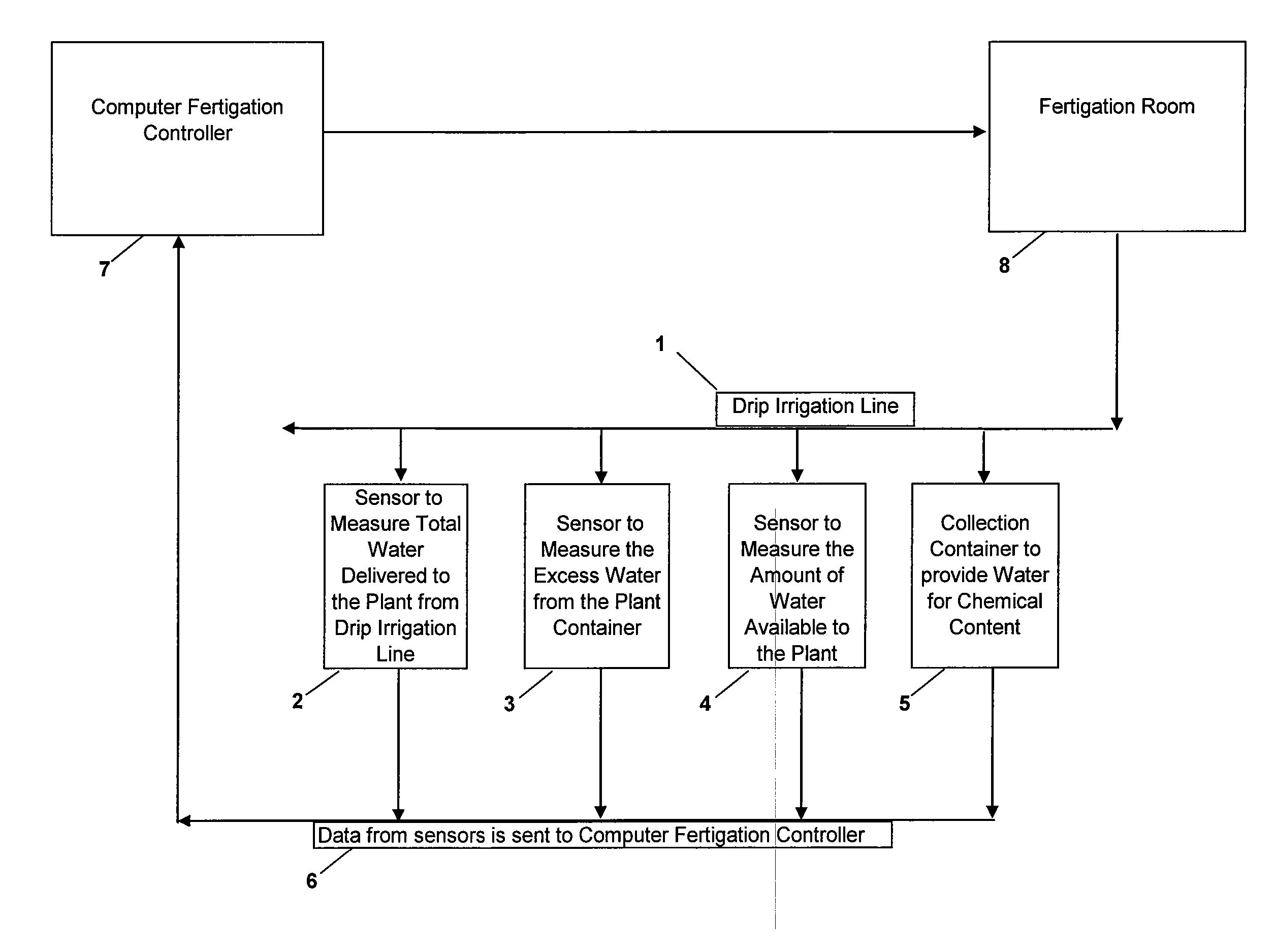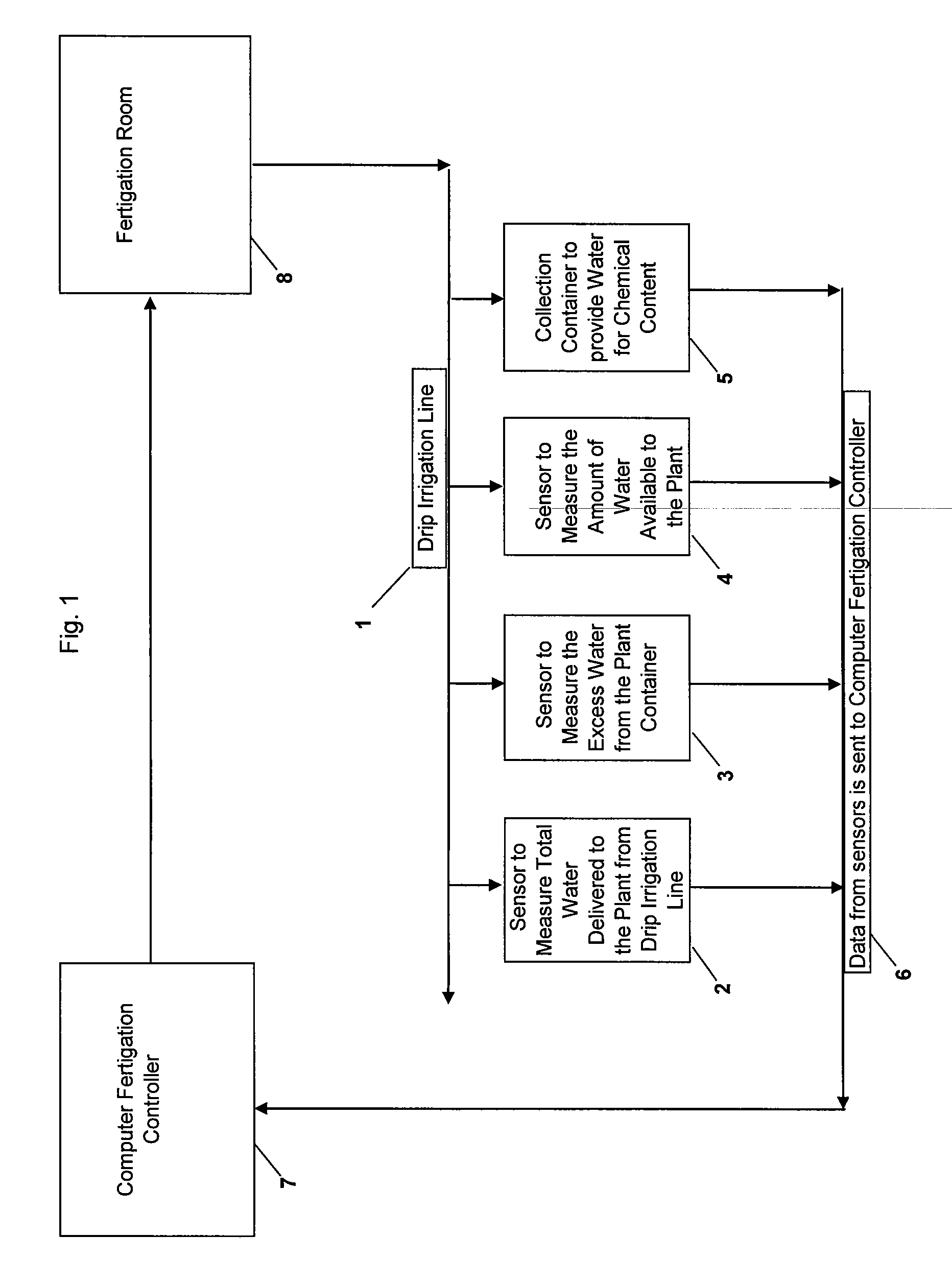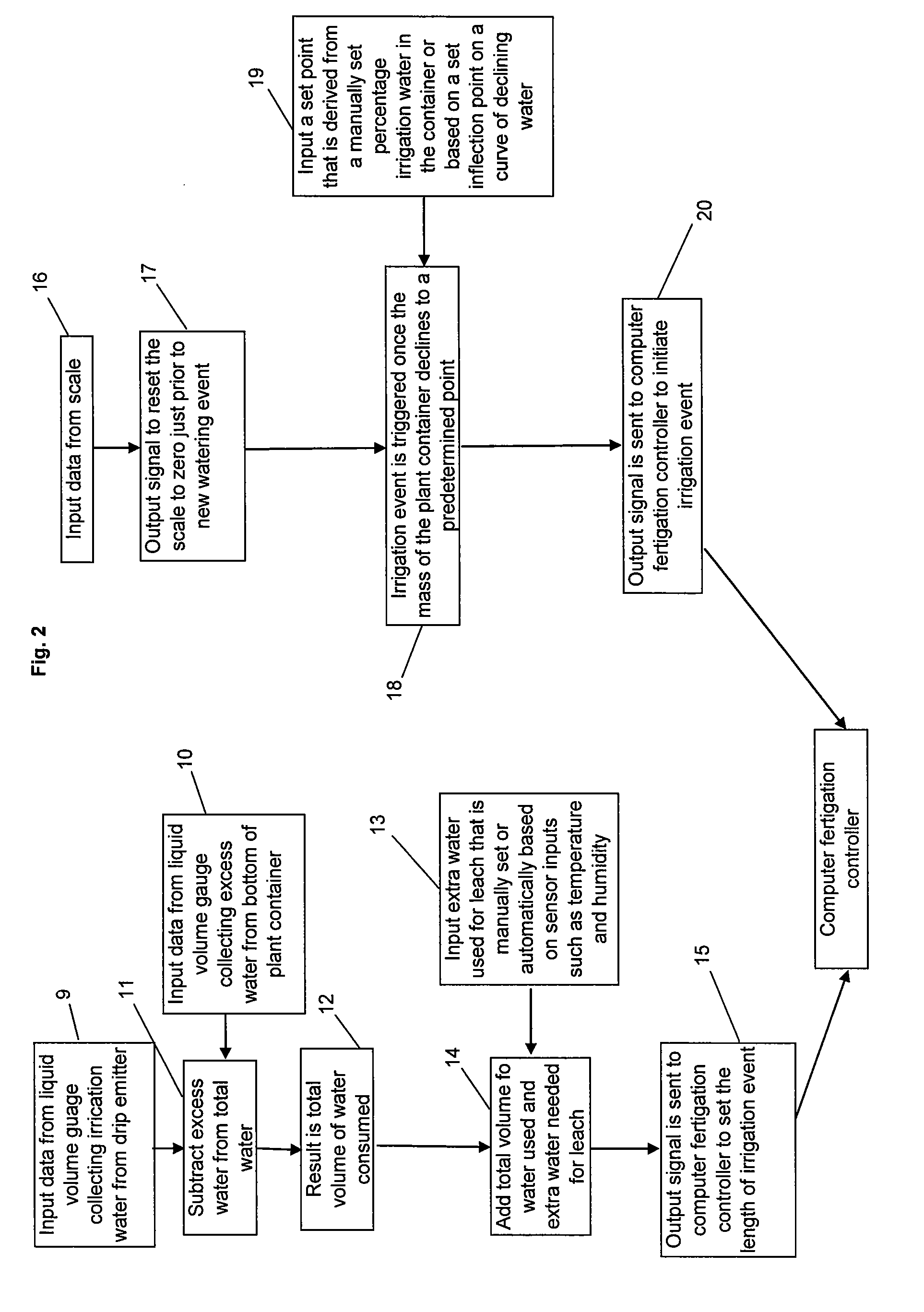Computer Controlled Fertigation System and Method
a computer controlled and fertigation system technology, applied in the field of computer controlled irrigation and fertigation, can solve the problems of stressing plants, affecting the production of plants and plant materials for consumption, and affecting the quality of plant materials, so as to reduce the risk of pest, fungal and insect infestation, and reduce the risk of fertilizer use. , the effect of reducing the risk of pests
- Summary
- Abstract
- Description
- Claims
- Application Information
AI Technical Summary
Benefits of technology
Problems solved by technology
Method used
Image
Examples
example 1
Measurement of Water Consumption
[0088] In a first embodiment of the current invention, a series of four sensors was positioned in order to quantify the amount of water and / or nutrients that a plant consumed. These four sensors were used to measure: 1) the amount of water delivered to the plant; 2) the volume of excess water exiting from the plant; 3) the chemical content of the excess water from the plant; and 4) the total amount of water continuously available to the plant.
[0089] To measure the amount of water delivered to the plant, a sensor (for example, TB4-L Hydrological Services 8″ Tipping Bucket Rain Gauge), as shown in FIG. 1, part 2 and FIG. 4, part 28, was stationed under a single set of drip emitters that deliver water to a single plant container. The drip emitter is a device that is used on an irrigation line to transfer water to the area to be irrigated, as shown in FIG. 4, part 26, next to the plant container in FIG. 4 part 29. Netafim integrated drippers, pressure c...
example 2
[0116] In a second embodiment of the current invention, soil moisture sensors were used along with the sensors for measuring water and nutrient consumption to provide data for the computer fertigation controller. Any soil moisture sensor can be used in this system. EasyAG soil moisture sensors, including Voltage Probe or EasyAG MA2-30 3 Sensor, which utilized Frequency Domain Reflectometry (FDR) were used to measure soil water. Depending on the size of the container there may either be a single sensor or multiple sensors placed at varying depths in order to sample the different portions of the active root zones. The soil moisture sensor provided two different perspectives on the soil, root, and water interactions. The first provided a real-time picture of how much water was being applied to the various root zones during irrigation. After the irrigation event has ended, the sensors also provided a real-time view of water use and availability.
[0117] Soil moisture...
example 3
Soil Moisture and Ion Level Sensor
[0138] In another embodiment of the current invention, a soil moisture sensor, the RS232 TriSCAN Probe, Easy AG TA2-30 3 Sensor from Sentek, is used to determine the volumetric ion content of the soil. The sensor provides real-time information on the total accumulated salts in the plant's container. This information is then used by the computer fertigation controller to determine how much additional water should be applied to the plant in order to flush out the excess salts. The soil moisture sensor tracks the volumetric ion content during irrigation events and stops the event when the ion levels drop to a certain level. Alternatively, a set of manual inputs can be made to set the level of additional water needed to perform the leach for specific ranges of observed light metric ion content.
[0139] Four sensors were also positioned in order to quantify the amount of water and / or nutrients that the plant consumed. The four sensors were used to measur...
PUM
 Login to View More
Login to View More Abstract
Description
Claims
Application Information
 Login to View More
Login to View More - R&D
- Intellectual Property
- Life Sciences
- Materials
- Tech Scout
- Unparalleled Data Quality
- Higher Quality Content
- 60% Fewer Hallucinations
Browse by: Latest US Patents, China's latest patents, Technical Efficacy Thesaurus, Application Domain, Technology Topic, Popular Technical Reports.
© 2025 PatSnap. All rights reserved.Legal|Privacy policy|Modern Slavery Act Transparency Statement|Sitemap|About US| Contact US: help@patsnap.com



